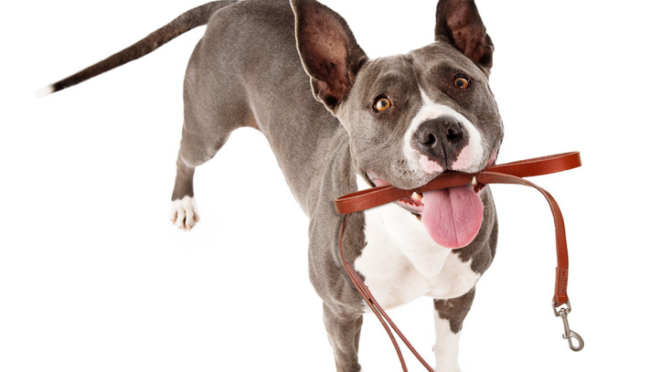If so, walks are probably pretty miserable for both of you.
Here are a few tips that should help you reconnect with your enthusiastic ‘train driver’!
- Mark and reinforce anything your dog does other than putting tension on the leash e.g. mark and reinforce standing with stillness, focus on you, sitting facing you, standing next to you… Choose something your dog is good at and that already has great associations, with lots of money in the ‘bank account’ of positive reinforcement. You can literally choose anything that does not involve pulling you along.
- Rapid-fire ‘click and treat’ for all correct responses. You want a really high reinforcement rate as this will mean your dog will be enthusiastic about playing your ‘game’!
- Use delicious, easy to chew and easy to swallow nutritious training treats
- Practise in lots of quiet locations around your home before you take any behaviour on the road!
- Very gradually add in ‘distractions’ – things that your dog might be interested in. e.g. a ball on the floor, a person sitting nearby, a change of location…
- Always have a happy smiley leash! Yes, your leash should look like a smile U or a J.
- It isn’t a contest to see who can pull most. If you don’t want your dog to pull you, please reciprocate and don’t pull your dog.
- When out walking, please ensure you connect with your dog. Tell him ‘well done’. Tell him ‘good boy’. (If you don’t connect with him, why should he connect with you?)
- Say ‘yes’ – or click – and give a treat whenever your dog looks at you. Yes, you will need to take lots of treats out with you when first teaching this skill!
- Say ‘yes’ – or click – and give a treat whenever your dog comes into the ‘Close’ position near your left leg.
- Use your left hand to deliver the treat in the ‘Close’ position, next to or just behind your left leg. If you use your other hand, you are likely to pull your dog out of position across the front of your body
- Act before the leash goes tight. Don’t wait until your dog is at the end of the leash as that is the hardest place to get him back from. Get your dog’s attention by making a kissy noise or saying ‘this way’ and changing direction.
- Try walking in big circles. This can help everyone relax and let’s face it, if your dog doesn’t know which way is forwards, he is less likely to pull you in that direction.
- Say ‘good boy’ when your dog moves back towards you and then walk on a few steps before you click and treat that lovely walking and focus on you! This will help you avoid creating a ‘yo-yo’ dog: hit end of leash – return to handler for treat – hit end of leash – return to handler for treat – hit end of leash …
- If your dog wants to sniff something/investigate something, as long as it is safe for him to do so, that is fine. Walks are meant to be fun! If your dog pulls towards something, ask for a behaviour he knows e.g. cue ‘watch me’, ‘touch’ (hand target), ‘front’ or ‘close’. Mark with a ‘yes’ and tell your dog ‘Go Sniff!’ Sniffing functions to positively reinforce the correct response to the given cue.
- A front-fastening harness can be helpful while you and your dog are learning to walk nicely together.
- Always say No to Shock, Prong, Choke, Pain, Fear & Force. Aversive tools that cause your pet to experience fear, anxiety, stress or pain, may appear to be the answer you have been searching for but at what cost to the emotional and physical well-being of your pet and your relationship with each other?
- Sign up for a basic ‘Manners’ class with a certified force-free trainer. Not only will you and your dog have fun together learning new skills, the skills that you learn will help you when you are out and about with your dog.
- Please remember that we need to give dogs feedback, guidance and encouragement when we are training them and in all our daily interactions with them. Don’t wait for a training session to reinforce all those lovely behaviours that you see throughout the day – reinforce them as they occur!
- Don’t have enough time to work on this skill but would love your dog to get in some practise while receiving some loving attention and much-needed exercise? Schedule a dog walking session with a force-free professional while you are at work or away from home!
If you need more help with teaching your dog this skill or any other, please contact a certified force-free trainer.
If you are a trainer who would like to add another service to your private or group class options, please check out The Walk This Way Instructor Program

